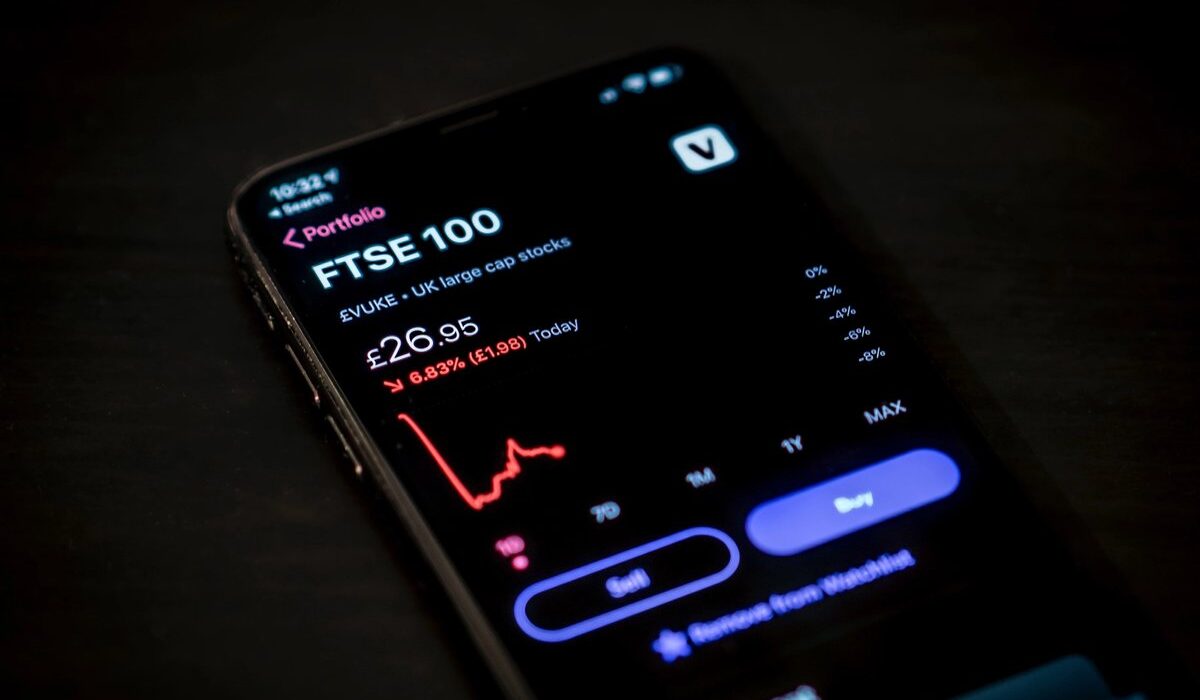Artex, a new “online stock exchange for art”, offered its first initial public offering (IPO) in an event at the Victoria & Albert Museum in London last night—Francis Bacon’s Three Studies for a Portrait of George Dyer. The painting last sold at auction in May 2017 for nearly $52m and will be offered to investors starting at around $55m. Dealings will begin on 21 July.
Yassir Benjelloun-Touimi, a co-founder of the exchange along with Prince Wenceslas of Liechtenstein, says they are initially focusing on pieces in the “€50m plus range”, the majority of them Impressionist and Modern.
“We need artists who have passed the test of time, whose works are established as trophies. That will provide maximum security,” Benjelloun-Touimi says, noting that “provenance is much easier to track” with Impressionist and Modern art. Expect the likes of Van Gogh, Monet, Picasso and Cézanne. For now, the firm will steer clear of Old Masters, which tend to be more difficult to source and authenticate. “We don’t have the luxury of selling a fake and surviving it,” Benjelloun-Touimi adds. In time, art IPOs by top contemporary artists will also be offered.
Trading is due to start by the beginning of July, with the intention of listing more than €1bn-worth of art over the coming months.
So how will it work?
Much like a traditional stock exchange, says Benjelloun-Touimi, a former hedge funder who held senior positions at UBS and Bank of America Merrill Lynch among others. He notes that Artex, which is based in Liechtenstein, is regulated by the Financial Markets Authority of Liechtenstein with IPOs underwritten by a bank. The investment bank Rothschild & Co is advising the exchange.
All works of art—or art IPOs—are owned by Artex, which will issue the shares, worth €100 each. These shares can then be bought, sold or traded on a secondary market on the Artex exchange. Shareholders are limited to a 10% stake in each work; anything above that threshold triggers a takeover bid, which could be outbid.
Instead of investors getting to hang the works in their homes or offices, all works held by Artex will be available for museums to apply for temporary loan.
“We will use part of the money that we make to help cultural institutions that are struggling to survive,” Benjelloun-Touimi says. “We will also support them in the restoration of art works and the financing of catalogues raisonné.” Meanwhile, the value of a loaned work will likely be lifted “by becoming part of a narrative”.
The gold standard
Art has long been considered an asset class, so how does it compare with other investments?
According to a 2020 Citi report, between 1985 and 2020, contemporary art investors have enjoyed annualised returns of 11.5%. During the same period, gold investment assets only returned an average of 3.2% per year.
In the longer term, Benjelloun-Touimi expects the returns on his art IPOs to be “close to gold”, with macro-economic indices such as interest rates affecting performance.
However, there is plenty of room for art as an asset class to grow, Benjelloun-Touimi thinks. As he puts it: “We are going from an art market which is only reserved for 500 to 1,000 people and we are opening it up to millions. The natural course of history says that it should push the prices up.”
The former banker acknowledges the skepticism around other attempts in the art world to fractionalise ownership, most notably via NFTs, which have crashed and burned in the past two years. He is also quick to point out that the art exchange is very distinct from art funds, which traditionally acquire and dispose of art works.
“Artex could be seen as disruptive for the art world,” Benjelloun-Touimi says. “But, rather than cannibalising what exists, we are making the cake bigger. There is $3.5 trillion-worth of art and the art market is just $60 billion or thereabouts. We could build a real economy around it.”
Though the figures being touted are enormous, Benjelloun-Touimi insists that art IPOs are not for the 1% investor. In fact, quite the opposite. He says: “We are democratising access. Our offerings are accessible for retail, private banks and institutional investors. We are trying to create a new kind of patron who doesn’t have to be rich or knowledgeable. They just have to give a bit of time to decide whether they want to invest.”

